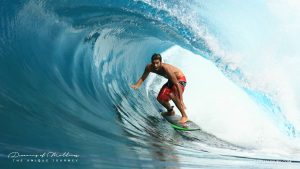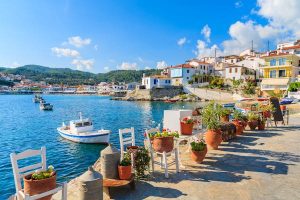
Visiting Norway is easy: for both locals and tourists, almost everything seems designed to help you live your best life and travel your best trip.
Norwegians are also pretty relaxed and welcoming: if there are any rules of etiquette to observe, you’ll be quickly forgiven if you break them, if indeed anyone even notices.
But there are still some things you should know and plan for. For example, Norway is one of the most expensive countries on the planet, so tips for keeping costs down can make a huge difference to your bank balance. This is also a destination where seasonal differences can be extreme, both in terms of climate and strange Arctic phenomena such as the midnight sun and the nothern lights. Understanding these can affect everything from outdoor activities to making sure you get a good night sleep.
What follows are our top tips to help you make the most of your Norwegian journey.
Get the inside scoop on the latest cultural happenings all over the world delivered weekly to your inbox with our email newsletter.  Time your visit with the seasons if you want to take part in outdoor activities © Anastasiia Shavshyna / Getty Images
Time your visit with the seasons if you want to take part in outdoor activities © Anastasiia Shavshyna / Getty Images
1. Outdoor activities are seasonal so plan carefully
Seasons are everything in Norway. Each long summer day might feel like it lasts forever, but the window for many activities rarely lasts longer than the June-to-August (sometimes just July-to-August) periods. This applies to hiking – Norway’s intensely beautiful Besseggen Ridge Trail, in Jotunheimen National Park, can draw 30,000 hikers in just two months. Some trails remain open beyond summer, but you run a serious risk of extreme weather rolling with very little warning while you’re out there. Cycling just about anywhere, and white-water rafting on the Sjøa River, are also strictly summer-only.
Winter sports like skiing, snowmobiling and dog-sledding have a similarly narrow opening, although dog-sledders can sometimes take a summer ride on a sled with wheels. It all means that planning is essential, and local tourist offices are an excellent resource for knowing what’s possible and when.
2. Eat well on a budget
Prices for a meal in Norway can be eye-wateringly high: in a decent restaurant, a main course for US$50 is somewhere close to the norm. Thankfully, the best Norwegian cooking is almost always worth it, but keep these sorts of prices for a special occasion, or even just dinner.
You’ll feel happier about doing so if you’ve planned carefully for the day’s other meals. Most Norwegian hotel buffet breakfasts are extraordinarily good, overflowing in generous proportions, and – best of all – usually included in your room rate. Take full advantage and you may well not need to eat again until the evening. If, on the other hand, you’re hungry again by lunchtime, many cafes have cheaper lunch specials and lighter meals, or you could plan for a picnic with food sourced from a supermarket and its delicatessen. Snacking at fish markets, or with one of the hot dogs sold at every Norwegian petrol or gas station, could also fill a hole without sending a torpedo through your daily budget. If you follow all of these tips, your dinner bill shouldn’t feel quite so painful.
3. Buy train and bus tickets online
Norway’s transport network is efficient and extensive. If you’re traveling Norway by rail, you’re in for a treat with some northern Europe’s most scenic rail journeys. But whatever you do, don’t pay full fare: Norwegians rarely do. On almost every route, Norwegian state railways sets aside a limited number of discounted (minipris) tickets. How much you pay has everything to do with how early you book, so start planning as soon as you have firm dates for your trip, even if it’s months in advance. Of all the bus services on offer across the country, Lavprisekspressen is known for its rock-bottom fares along major routes – book online and book early.
 Look out for budget hotel chains in Norwegian cities © Westend61 / Getty Images
Look out for budget hotel chains in Norwegian cities © Westend61 / Getty Images
4. Join a hotel loyalty scheme
The overwhelming majority of Norwegian hotels belong to a hotel chain, or at least to some more loosely affiliated groupings. Joining up to one of their loyalty programs is always free, so join as many as you like. Better still, join one and then find hotels along your route that belong to your program. The best such programs have a simple offer: the more nights you stay – just how many varies from one chain or program to the next – the more free nights you get as a reward for your loyalty.
Another option that is becoming increasingly common, especially in cities, are budget hotels. Before it was just the hostels (vandrerhjem) that promised reasonable prices, but increasingly, slick hotel-hostel hybrids like Citybox, Smarthotels and Basic Hotels provide respite from the sky-high room rates.
5. Bring a sleeping mask in summer
Let’s face it, Norway’s midnight sun (which can mean 24 hours of daylight for months on end) and polar night (the same, but with endless darkness) can be confusing or frustrating. At first it can be exciting to be walking alongside a beautiful fjord in brilliant 3am sunshine. And there is considerable novelty to eating lunch under a night-dark sky. But how to sleep in summer? Many hotels, particularly in Norway’s north, have heavy-duty, light-blocking curtains, but bring a sleeping mask in summer, just in case.
6. Norwegians are tolerant, but always be considerate
Norwegians are pretty relaxed about most things, and you’d be hard-pressed to find a more tolerant nation of people than Norway. In cities in particular, the guiding principle seems to be to have a good time as long as you’re not hurting anyone. In rural areas, it’s slightly more complicated, but only slightly. There are always exceptions, but Norwegians in small towns and remote areas tend to be more socially conservative. Loud and loutish behaviour is rarely welcome in such places, and if you have an all-night party in a small village, you’ll have misread your surroundings and taken Norwegians’ famous tolerance too far.
 Expect the pace on the single-lane roads to be fairly slow when driving in Norway © Jana_Janina / Getty Images
Expect the pace on the single-lane roads to be fairly slow when driving in Norway © Jana_Janina / Getty Images
7. Driving will take longer than you expect
Many of Norway’s roads are engineering marvels, taking you places no road should go. Norway has the longest tunnels in the world and curvaceous bridges that render water obsolete as an obstacle, and car ferries take care of the rest. So rare are potholes, that people take photos of them. Just don’t expect to go very fast. Part of that clearly has to do with the terrain. It’s also because, apart from a short distance either side of major cities, freeways are as rare as potholes. Throughout much of the country, especially in summer, you’ll share the road with trucks and campers with only semi-regular overtaking lanes to ease the frustration. Count on slowing down, enjoying the view, and averaging no more than 60km/h (37mph) on most journeys, longer if you stop along the way.
8. Take basic safety precautions
Norway is an extremely safe place in which to travel, possibly even one of the safest in Europe. Like any large modern cities, pickpockets are possible in popular tourist areas, especially Oslo and around the Torget area of Bergen. Here and elsewhere, keep your valuables hidden, and never leave them visible in an unattended car. As long as you’re sensible in ways such as these, you and your personal belongings may well be safer in Norway than they are back home.
9. Watch the weather
Watching the nightly weather bulletin with rapt attention isn’t some quirky little pastime in Norway: it could just save your life. Even in summer, wild weather can roll in without warning, which is fine if you’re driving the E6, less so if you’re hiking in Hardangervidda or Jotunheimen, or snowmobiling in Svalbard. Whenever you’re heading out into any Norwegian wilderness, wise precautions include always carrying warm wet-weather gear, as well as emergency water and food. And always let someone (either your hotel or the local tourist office) know where you’re going and when you expect to be back.



